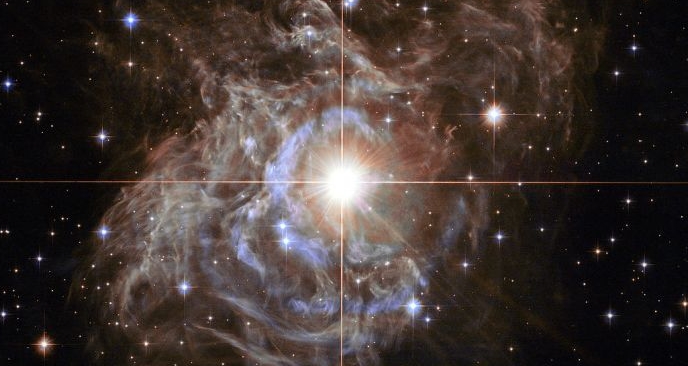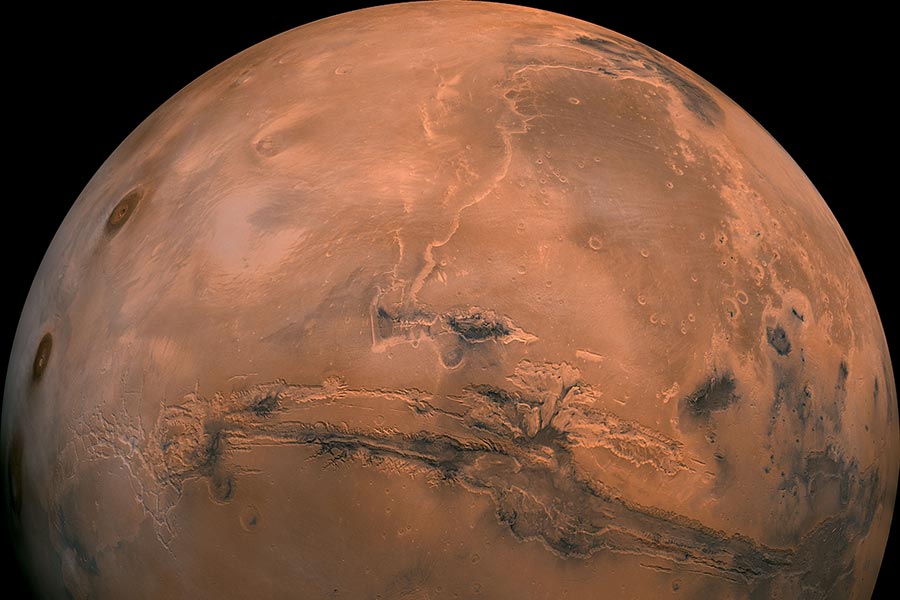
Advertisement
The universe is expanding faster than expected and scientists speculate the finding may be explained by a mysterious force called dark radiation.
Key points
- Universe is expanding 5 – 9 per cent faster than previously estimated
- Expansion could be caused by weird things happening with dark energy or dark matter
- Or a mysterious force known as dark radiation, a new type of a sub-atomic particle such as a neutrino
(Article by Bianca Nogrady and Genelle Weule, republished from //www.abc.net.au/news/2016-06-03/dark-radiation-may-be-speeding-up-expansion-of-the-universe/7472074)
An international team of researchers led by Professor Adam Riess of the Space Telescope Science Institute and The Johns Hopkins University have made the most accurate measurements so far of the universe’s rate of expansion following the Big Bang 13.8 billion years ago.
They discovered the universe is expanding 5 per cent to 9 per cent faster than expected.
The findings, to be published in The Astrophysical Journal, have prompted a rethink of our understanding of the universe and in particular, the concepts of dark matter and dark energy.
Normal matter such as stars, planets and gas is thought to constitute only 5 per cent of the universe.
“Either something else is missing, as in there’s a new type of substance we don’t know, or the things we already know of are really weird and crazy and something funny is going on.” -Dr Brad Tucker
The rest is 25 per cent dark matter and 70 per cent dark energy, both of which are invisible and have never been directly detected.

Co-author and astronomer Dr Brad Tucker from the Mt Stromlo Observatory at the Australian National University, said there were a number of possible explanations for the finding.
One possibility is that dark energy changes over time — “but our measurements of dark energy are constant” — another possibility is that dark matter is stronger or behaves with gravity differently, he said.
A third possibility is a mysterious force known as dark radiation.
“Either something else is missing, as in there’s a new type of substance we don’t know, or the things we already know of are really weird and crazy and something funny is going on,” Dr Tucker said.
Dark radiation would be different to dark matter or dark energy, Dr Tucker said; possibly a new form of neutrino.
“We either add something new or we really have to figure out what do we think about dark matter and dark energy and what they are.”
Stars and supernovae measure the Hubble constant
The rate of expansion of the universe — known as the Hubble constant — has been predicted based on the expansion rate of the universe shortly after the Big Bang, which is known from studies of echoes of the Big Bang called the cosmic microwave background.
There has long been a discrepancy between the speed at which the universe was thought to be expanding and the actual measurements but until now, this difference had been blamed on measurement error.
To check the expansion rate of the universe today, researchers used the Hubble Space Telescope to measure the distance to more than 2,400 stars in 19 galaxies, and approximately 300 supernovae of a known brightness.
The Hubble Space Telescope measured the distance to these stars and galaxies from two opposite points in the Earth’s rotation around the Sun, six months apart, using a technique known as parallax.
Dark matter, dark energy and dark radiation
- Matter — the stuff that makes up everything from galaxies and planets to us — only accounts for 5 per cent of the universe’s energy
- We can’t see the other 95 per cent — hence ‘dark’ — but it’s real because we can see the effect it has on matter
- 25 per cent is dark matter — it makes stars rotate around galaxies faster than can be accounted for with regular matter
- The rest (70 per cent) is dark energy, which pushes out against gravity making the universe expand faster and faster.
- Dark radiation is a new type of a subatomic particle such as a neutrino. It would be in the 5 per cent of normal stuff but not normal and not something seen… yet— Bernie Hobbs
“Imagine if you stick your finger out and you blink your two eyes, your finger will move differently compared to the background objects — in this case background stars,” Dr Tucker said.
Researchers then used trigonometry to calculate how far away those stars and supernovae are, and combine this information with other measurements to work out how fast those objects are moving and in which direction.
They calculated the Hubble constant is 73.2 kilometres per second per megaparsec, which means the distance between cosmic objects will double in another 9.8 billion years.
This increased rate of expansion does pose some interesting scenarios for the future of the universe, raising the prospect that it will one day literally tear itself apart, Dr Tucker said.
“The fabric of space and time will rip apart, causing the universe to end in what we call the Big Rip,” he said.
Unlike the Big Bang — where the universe expanded out from a singularity — and the Big Crunch — where it collapses back into a singularity, Dr Tucker said the Big Rip would be more like a balloon inflated until it bursts.
Alternatively, the universe could end in the Big Freeze, he said.
“The universe also could just keep growing and so it just runs out of stuff and turns into what we call the Big Freeze or an empty cold universe with no stars.”
More work needed to verify results
Professor Jeremy Mould of Swinburne University’s Centre for Astrophysics and Supercomputing said the new study is a continuation of the work to measure the Hubble constant.
“But we should be sceptical about comparisons of this result with the Planck [telescope’s] wonderful results of cosmic microwave background radiation,” Professor Mould said.
He said concluding that there is a fourth kind of neutrino is “an extraordinary result that requires an extraordinary standard of proof”.
Dr Tucker agreed more research is needed to verify whether the expansion was caused by dark energy, dark matter or dark radiation “because something’s not right”.
“Something’s weird in the universe.”
He said the result will be further tested by experiments using different techniques by other projects such as the Taipan galaxy survey, which uses the UK Schmidt Telescope at Siding Springs.
Read more at: //www.abc.net.au/news/2016-06-03/dark-radiation-may-be-speeding-up-expansion-of-the-universe/7472074
Submit a correction >>
This article may contain statements that reflect the opinion of the author
Advertisement
Advertisements















